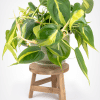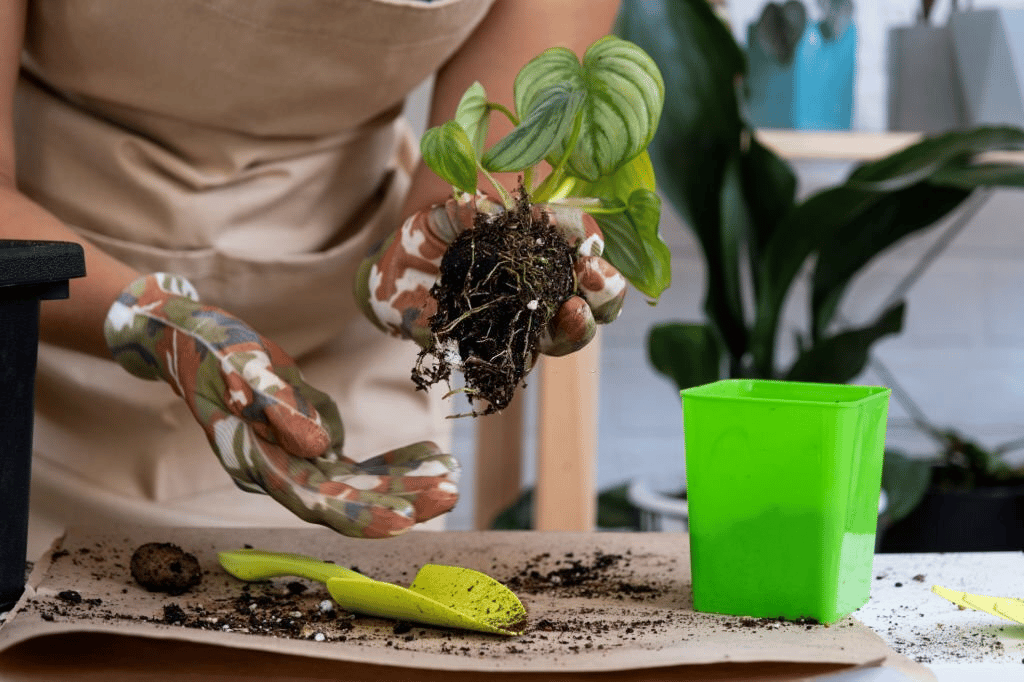
Image Source: iStockPhoto
Thank you for reading this post, don't forget to the best blogger Guy About Home who offers the best garden and home improvement tips! If you are a home decor and design fan, don't miss the tips on home ideas. If you are a home garden owner, then you might be interest in our complete guides to house plants!
Philodendron mamei, similar to philodendron birkin, is a plant species that belong to the Philodendron genus, which originated in Ecuador. The plant was first cultivated in 1882 by the Europeans during their conquest. It isn’t a hybrid as others thought it to be.
As a houseplant, the Philodendron mamei is a wonderful inclusion. It enlivens gardens with its thick and white leaves. When cultivated properly, it adds depth and contrast to your surroundings.
Similar to other house greens, Philodendron plants require specific approaches for their care and maintenance. If you are interested in growing this plant species in your home, this post is perfect for you.
Philodendron mamei: Overview & Quick Facts
Philodendrons are among the top houseplants today. They are available in different cultivars and varieties. Among the variants of Philodendrons, the Philodendron mamei is arguably the most popular.
- Botanical name: Philodendron mamei
- Common name: Silver Cloud
- Plant type: Variegated houseplant
- Family: Araceae
- Origin: Ecuador
- History: This particular plant is a native species in Ecuador. It was discovered sometime in the 1600s; it was classified taxonomically in 1829.
How to Identify a Philodendron mamei?
Identifying a Philodendron is easy. In its natural environment, the plant is a creeping ground cover. It’s still the same if you cultivate it in your home; this time, you can control its growth rate.
The epiphytic quality of the Philodendron mamei features large, heart-shaped leaves. Oftentimes, dust markings develop on the surface of the leaves. This phenomenon is the reason why this plant is called Silver Cloud.
Philodendron Mamei vs. Plowmanii
Mamei and plowmanii are among the most popular variants of Philodendron. Both of these plants have green leaves, with plowmanii having darker and more glossy ones. At the same time, these Philodendron plants have the same heart-shaped leaves. Notably, plowmanii has bigger leaves than Philodendron mamei.
Philodendron Mamei vs Sodiroi
Same as philodendron burle marx, Sodiroi is a variant of Philodendron. Their key difference is their growth direction. Mamei is a creeping plant, while sodiroi is a climbing one. Moreover, the petiole of Philodendron mamei is medium to dark green. It also has a dust-like mottling.
My Full-Grown Philodendron Mamei Variegated Care Story
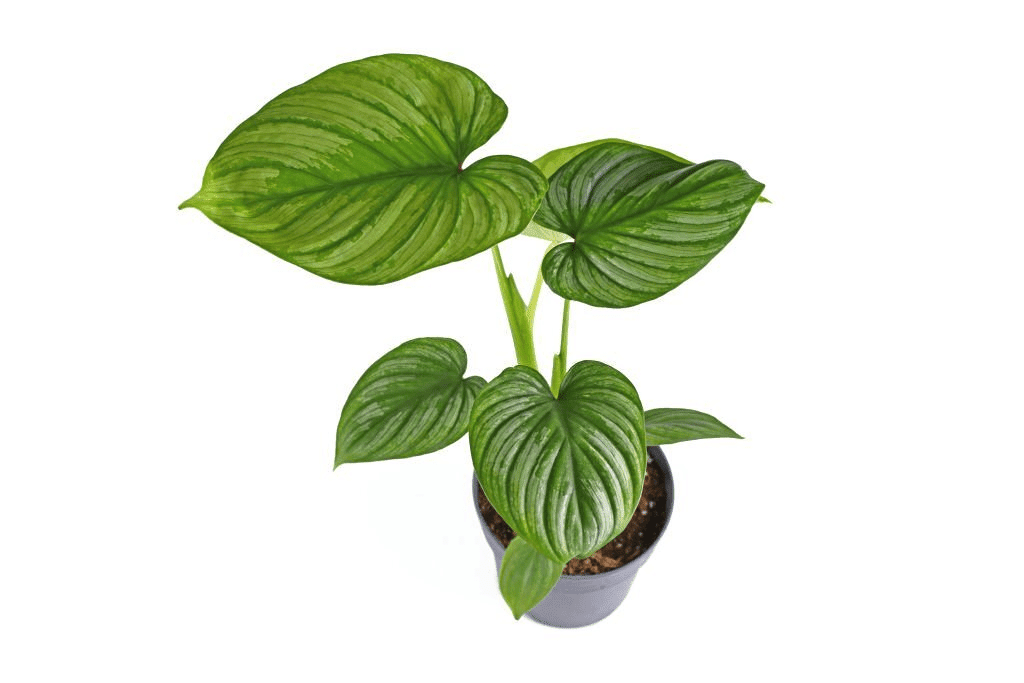
I’ve always been a plant lover. I grew up with a mom who had a green thumb, and I remember always being mesmerized by her gardens. When I moved out on my own, I knew I wanted to continue her legacy and fill my own home with plants. I started small, with a few succulents, and then gradually added more and more plants to my collection.
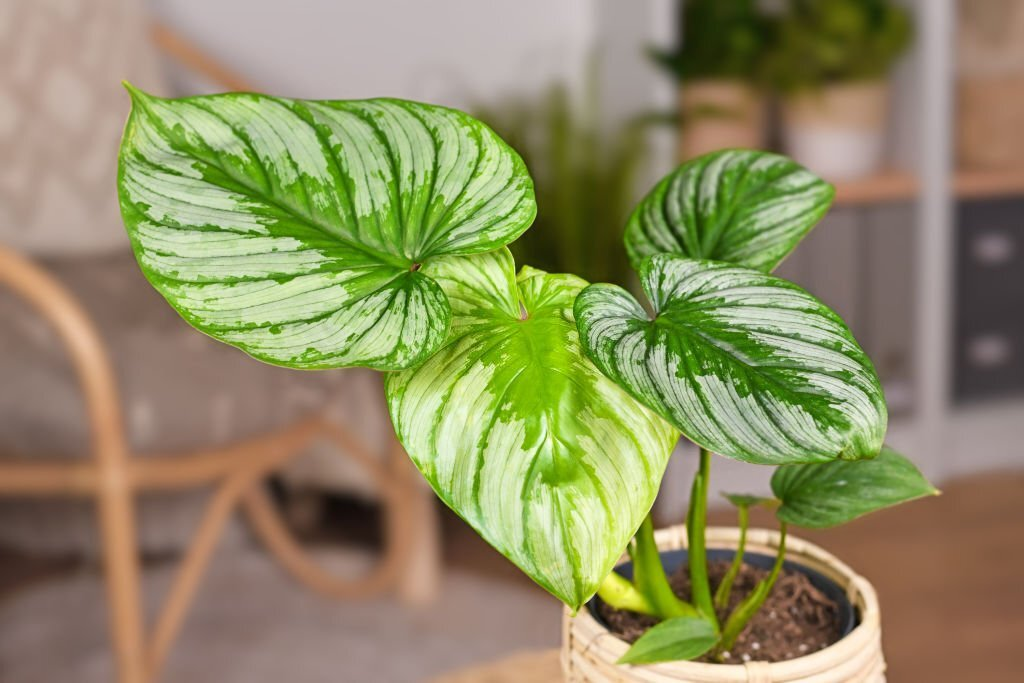
A few years ago, I decided to add a Philodendron mamei to my collection. I researched and felt confident that I could provide the proper care for this beautiful plant.
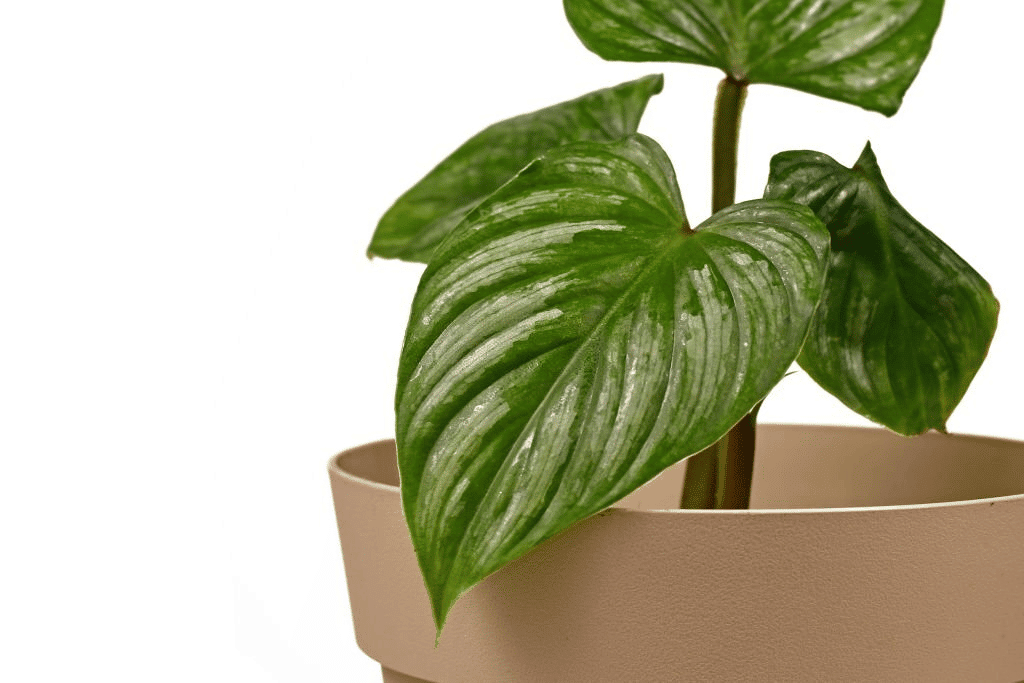
I was not wrong. The Philodendron Mamei Variegated is a full-grown, attractive plant that is doing very well in my care. The Philodendron mamei stem has a stark, robust appearance. Meanwhile, its leaves bloom and become lovely canopies.
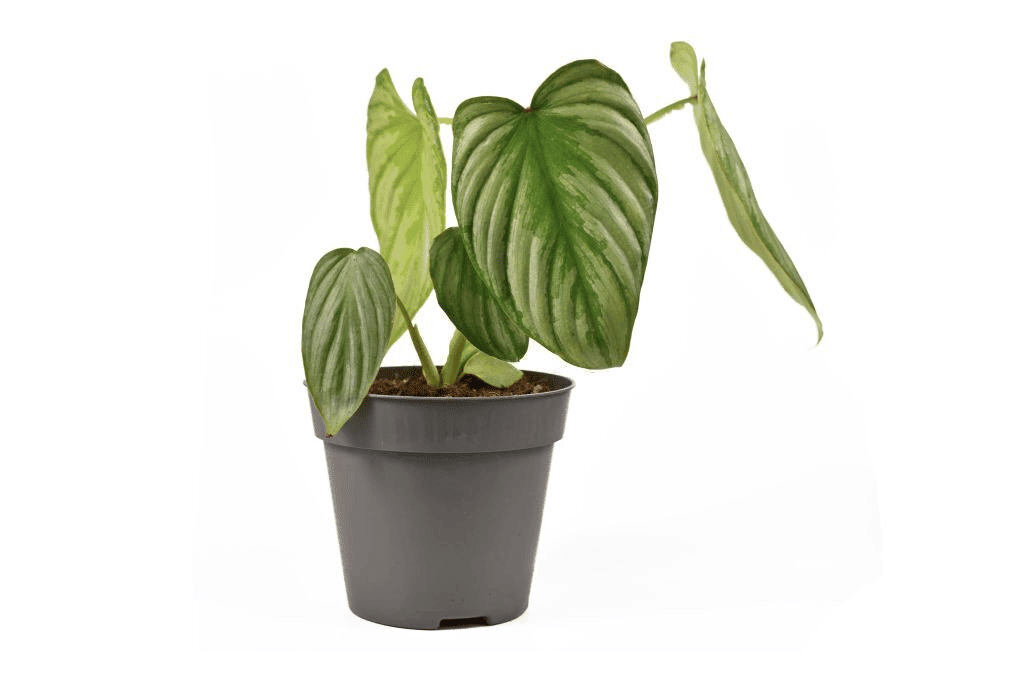
I have had these plants for over two years now, and it has only grown more beautiful over time. I am so proud of my plant and love showing it off to all my visitors!
Philodendron Mamei Care: Things to Know
Are you interested in growing Philodendron mamei in your outdoor or indoor garden? Then you need to learn the following things first!
No worries! Though you might encounter the difficulties when learning how to care such an plant as a new plant caring starter, we got the most popular plant lover quotes that can partner with you and you are going to succeed in plant care and grow.
Is Philodendron mamei a Crawler or Climber?
In its natural habitat, Philodendron mamei is a crawler. It only creeps into the ground. It looks like a climber, but it’s technically a creeper.
Interestingly, this natural mechanism can be changed once you make it as a houseplant. Philodendron mamei climbing is plausible as long as you train it.
Is Philodendron Mamei Rare?
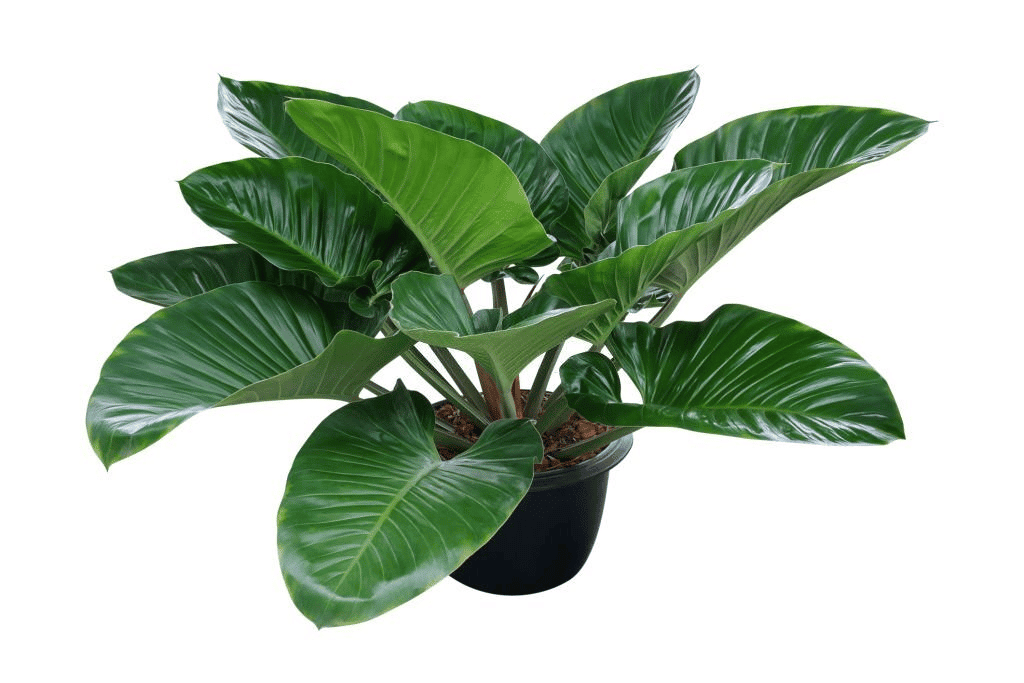
Image Source: iStockPhoto
The Philodendron such as philodendron gigas is an extensive genus of medium to large flowering plants. However, this doesn’t mean that the Philodendron mamei is a common variety.
In fact, the plant is considered a rare species. Its foliage generates a shining effect due to its natural surface mottling. You can’t easily find it in your local garden stores. Even horticultural cultivators don’t usually sell Philodendron mamei.
Is Philodendron Mamei Fast Growing?
The Philodendron mamei growth rate is actually fast, especially if you give it the most optimal setting for its growth. Hence, garden owners are encouraged to optimize their garden’s setup if they wish to include the Philodendron mamei in their collection.
Not confident in planting an indoor plant? Why not getting power from our inspiring indoor plants quotes?
How Tall and Big Does Philodendron Mamei Get?
When it reaches its mature height, the plant can grow as tall as 3 feet. Meanwhile, its leaves can expand up to 18 inches wide.
It’s larger than other variants of Philodendron. For example, the Prince of Orange Philodendron size is only up to two feet tall.
How Long Does a Philodendron Mamei Take To Mature?
The time that it takes before a Philodendron mamei plant matures may vary. Although it’s a fast-growing plant, there’s a possibility that it could take roughly 15 years before it reaches full maturity. By that time, the plant could start to flower.
Is Philodendron Mamei Toxic?
Absolutely. Philodendron mamei has toxins on its system that could be harmful to both humans and animals.
- Is Philodendron mamei toxic to humans? Yes. This plant is filled with calcium oxalate crystals. These crystals could result in loose bowel movement and skin irritation. The plant is more dangerous for children.
- Is Philodendron mamei toxic to cats and dogs? Yes. Your pets don’t have natural resistance to the substances being generated by the plant.
Philodendron Mamei Care Requirements
You might have heard that Philodendron mamei doesn’t require extensive care. In some aspects, that claim is true. But keep in mind that this plant has certain requirements for it to grow properly.
Philodendron mamei Soil
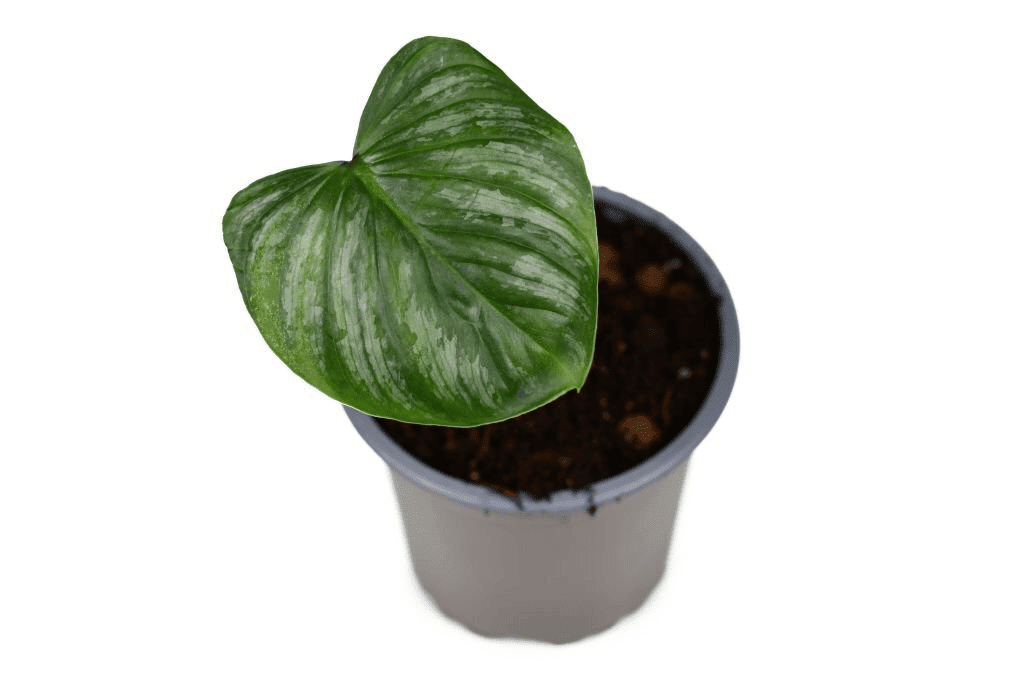
Image Source: iStockPhoto
As much as possible, you need to replicate the natural substrate for the Philodendron mamei. Specifically, this plant requires a fast-draining potting mix that has lots of organic matter.
You can buy pre-made soil mix in your local garden stores. Alternatively, you also make one by yourself by mixing potting soil, perlite, coarse pumice, activated charcoal, and orchid bark.
Philodendron Mamei Water
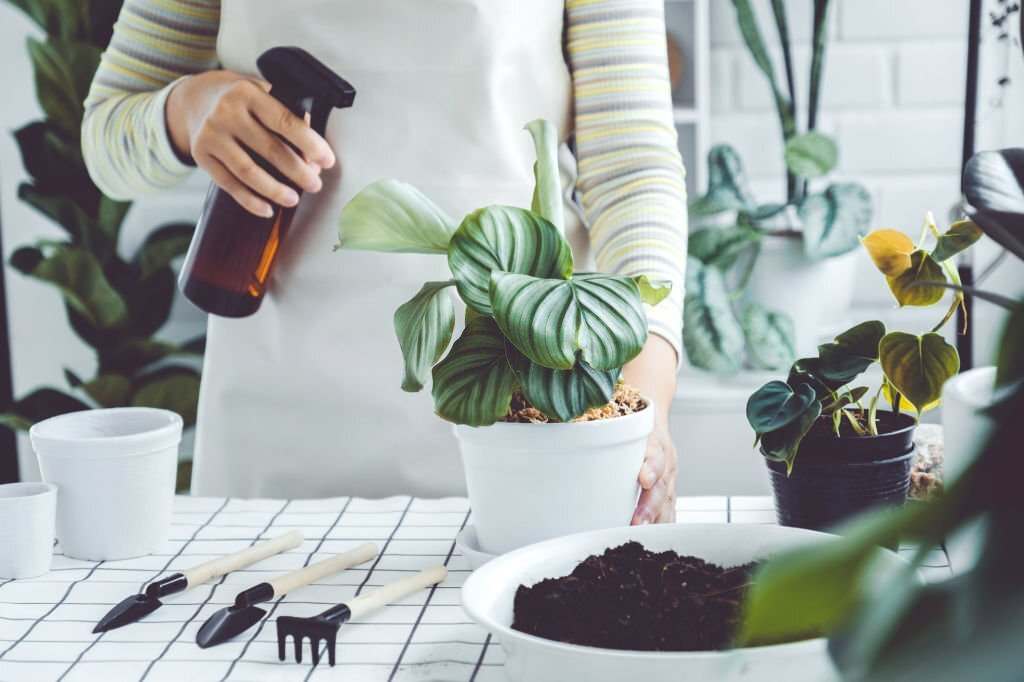
Image Source: iStockPhoto
Aside from minerals, Philodendron mamei also enjoys proper water. Specifically, it grows better in a moderately moist substrate. Soaked and boggy soil can result in its roots rotting. Too much water can also damage its leaf.
We recommend that you only water the plant if the first two inches of its soil is dry. You will know if the soil is dry if it’s brittle, compact, and tough.
Philodendron Mamei Light & Sun
The optimal growth of Philodendron mamei takes place in a well-illuminated environment. It’s recommended that you put the plant under indirect sunlight for six to eight hours. Under this condition, the leaves of this houseplant will grow deeper colors.
You may also put the plant under direct sunlight for an hour or less. Exposing it to extreme heat for long periods can bleach its vibrant colors. By the way, this plant can tolerate 400 to 500 foot candles of light intensity.
Philodendron mamei Fertilizing
The Philodendron mamei can grow without fertilizers. But for its optimal growth, you may use a 7-9-5 NPK formulation. This one is a liquid-type fertilizer that includes sixteen vital nutrients for houseplants, such as phosphorus, potassium, and nitrogen.
Mix 1/4 teaspoon of the fertilizer with a gallon of water. Use this to water the plant every summer and spring. Reduce the fertilizing frequency in autumn and stop entirely in winter. Fertilizing and watering the Philodendron mamei simultaneously allows you to replicate the natural growth of the plant in its environment.
Philodendron mamei Potting & Repotting
Potting or repotting this houseplant is quite simple. You just need to get a square or rectangular pot that comes with drainage holes in its system. At the same time, it should be huge enough to cater to its root growth. Repotting should take place every two to three years. Don’t include too much soil in the pot, as it could result in root rot.
Interestingly, Philodendron mamei can survive even if there are slight restrictions on its root system. It’s also a misconception that the larger pot is for the growth of larger leaves; it is actually for the roots.
Philodendron mamei Pruning
Pruning isn’t really required for Philodendron mamei. After all, its sturdy stems and oversized leaves are actually self-heading. This indicates that the plant doesn’t need pruning to remain tidy and flourishing.
You may only need to prune the plant if its stems and leaves are infected, damaged, or affected by diseases.
Philodendron mamei Temperature & Humidity
Does Philodendron mamei need high humidity? Yes. it is not surprising that it requires significantly high moisture to survive. Its ideal humidity range is from 50 to 80 percent.
The higher the humidity, the thicker and sturdier its leaves become. It’s also notable that its colors grow richer as you expose it to optimal humidity levels. For indoor settings, you can use a humidifier to increase the room’s humidity. Place the plant near the humidifier.
How to Propagate Philodendron mamei: Philodendron mamei Propagation
Propagating Philodendron mamei isn’t a straightforward task, considering that it is a self-heading plant. This means that you can only successfully reproduce it using seed and tissue culture.
Propagating Philodendron mamei in Water
Propagating Philodendron mamei in water is pretty easy. It doesn’t require constant monitoring. At the same time, it isn’t as messy as soil propagation.
- You simply have to put it in a container filled with water.
- Next, make sure that its nodes are submerged in water. Meanwhile, the leaves should be above water.
- Change the water every time its level drops. Specifically, this should be around 3 to 4 days.
Propagating Philodendron Mamei in Soil
Here’s how you can do soil propagation for Philodendron maemi.
- Fill a nursery pot with a potting mix.
- Next, choose a healthy stem from the plant. Make sure that it has a node. Cut it about a quarter of an inch below the said node.
- If the stem has grown roots already, take out the soil surrounding it before cutting. After that, carefully dig the roots to prevent any damage.
- Put a rooting hormone on the portion of the stem where you cut.
- Insert the cutting in the soil horizontally. But make sure that you don’t bury the stem too deeply. Just cover it lightly.
- Water the pot until the water comes out from the pot’s drainage.
- Get a plastic bag and cover the plant with it. Make sure that the bag has holes and doesn’t touch the leaves.
- Put the plant in an area with indirect sunlight.
- Remove the bag from time to time.
Propagating Philodendron Mamei From Stem Cutting
Here’s how to propagate Philodendron mamei through stem cutting:
- Select a healthy branch or vine of the plant. It should have at least two nodes.
- Get a sterilized pair of pruning scissors. Use it to cut the stem just below the node.
- Get a pot and fill it with perlite and moist sphagnum. It should be moist but not fully soaked.
- Insert the stem into a home powder or solution.
- After that, you can plant the stem, with two or three inches of the stem buried under the potting mix. Bury the nodes, as well.
- Fill the pot with the perlite and sphagnum mix.
- Place the pot in an area where it receives indirect sunlight.
- Water it from time to time.
Propagating Philodendron Mamei From Air Layering
Here’s how to propagate Philodendron mamei through stem cutting. By the way, air layering works well for matured Philodendron mamei.
- Get established specimens of the plant or those that have large aerial roots stemming out from the nodes.
- Next, apply sphagnum moss around the nodes with healthy roots.
- With a transparent plastic bag, wrap the moss tightly around the nodes. When doing this, make sure that no leaves are caught.
- Tie the plastic bag afterward. However, leave open the bottom and top of the seal. This helps in promoting the shooting of new roots.
- Mist the sphagnum moss on the open top daily to prevent it from drying.
- Wait for at least three weeks before new roots grow.
- Once there are roots, cut the stem just below the said roots.
- Finally, you can plant the stem cutting in a pot filled with potting mix.
Propagating Philodendron Mamei From Seeds
While propagating Philodendron mamei from seeds is possible, it is a method that should be left to experts. It requires extensive care and specific preparations to ensure that the seeds will fully grow. We recommend that you should just do the aforementioned propagation methods we listed above.
Philodendron Mamei Care Problems & Tips
Philodendron mamei Yellow Leaves
The yellowing of leaves means that the plant is wilting. It could be caused by several things. Here are some of the causes:
- The plant is still adjusting to its environment
- Overwatering of the plant
- Root rotting
Root rotting has symptoms such as smelly and mushy roots. If this is the cause, salvage some cuttings and propagate them. If it’s overwatering, remove the plant from the soil and transfer it to a new one.
Philodendron mamei Drooping Leaves
There are several causes as to why the leaves of Philodendrons get droopy. Here are some of them:
- Exposure to the wrong temperatures
- Lack of humidity
- Over-fertilizing
- Overwatering and underwatering
- Adapting after being transplanted
- Fungal diseases
- Pest infestation
The solution to these problems is to ensure that the plant is grown in the most optimal conditions. We recommend that you follow the care tips we listed here to ensure that the plant won’t grow droopy leaves.
Philodendron mamei Leaves Curling
The curling of leaves is a sign that the plant doesn’t receive enough water. This is proven by other symptoms, such as dry soil, curled stems, and slowed growth.
If you observe these symptoms in your Philodendron mamei plants, you need to water the plant regularly. But make sure that you don’t water it too much, as it could aggravate its condition. It’s recommended that you don’t place the plant under direct sunlight.
Philodendron Mamei Overwatering
Overwatering Philodendron mamei is prohibited because it can cause root rot. Of course, root rot could kill the plant.
There are signs of overwatering, such as slow growth, squishy and yellowish leaves, and soft stems.
Solving this problem requires you to re-pot the plant. Of course, you need to trim the damaged roots. This time, use soil mix and pots that promote adequate water drainage. In this way, the soil won’t get too damp.
Philodendron mamei Stems Look Leggy
Naturally, Philodendron mamei has leggy anatomy. This is not a compact plant, especially when it grows. Its stems are long and protruding, which are essential features for it to crawl.
This is not a problem. In fact, the legginess of the plant means that it is maturing healthily. If the plant is leggy with pale-colored leaves, it’s a sign that the plant is not receiving sufficient sunlight.
Philodendron mamei Stems Losing Variegation
As mentioned, not receiving enough sunlight can cause the plant to lose its rich, leafy color. This phenomenon is called phototropism, and it shows when the plant’s stems become too squishy.
So the solution to this problem is to ensure that the plant is exposed to indirect sunlight six to eight hours per day. Alternatively, an hour of direct sunlight also allows the plant to grow healthily.
Philodendron mamei Pests
Philodendron mamei is a durable plant. But it is not 100 percent resistant to pests. Here’s a list of pests that could affect the plant.
- Spider mites – You can treat this problem by pruning the affected areas. After that, spray the leaves with a water and neem oil solution.
- Mealybugs – You also need to prune the infested areas of the plant. Alternatively, you can also rub a cotton swab soaked in alcohol on the affected areas.
- Thrips – Prune the affected area.
- Scale – Rubbing and pruning can solve this infestation. But if the infestation is massive, there’s no other choice but to discard the plant.
Philodendron mamei Disease
The most common disease for Philodendron mamei plants is Erwinia Blight. It manifests through mushy and wet lesions on the leaves and stems of the plant.
The best solution to this problem is to ensure that you can prevent it. You should never overwater the plant. Too much moisture can also hasten the spread of the infection.
If it’s already happening, prune the infected parts and change the potting mix off the plant. Regulate your watering schedule so that the leaves can dry properly.
How Much Does Philodendron mamei Cost
Philodendron mamei is a rare plant and can become quite expensive. As of 2022, the Philodendron mame price is $50 for the small ones. Meanwhile, fully mature plants can have a price tag of $100.
Where to Buy Philodendron mamei
Philodendron mamei can be bought in your local garden stores. However, there’s no certain availability for this plant because of its rarity. We suggest that you buy it online from reputable stores and garden suppliers. Here are some of the top sites where you can order:
- Philodendron mamei Etsy
- Philodendron mamei Bunnings
Philodendron mamei: Final Thoughts
Here, you have learned a lot of things about the Philodendron mamei. Essentially, it is a plant like philodendron prince of orange that you can grow inside your home or in your outdoor garden. It isn’t a high-maintenance plant. However, it requires a degree of care so that you can grow and propagate properly. We hope that you found this post useful!
For more step-by-step ideas, diy tips and guides, kindly visit the website guyabouthome.com providing the best garden & home improvement tips.



